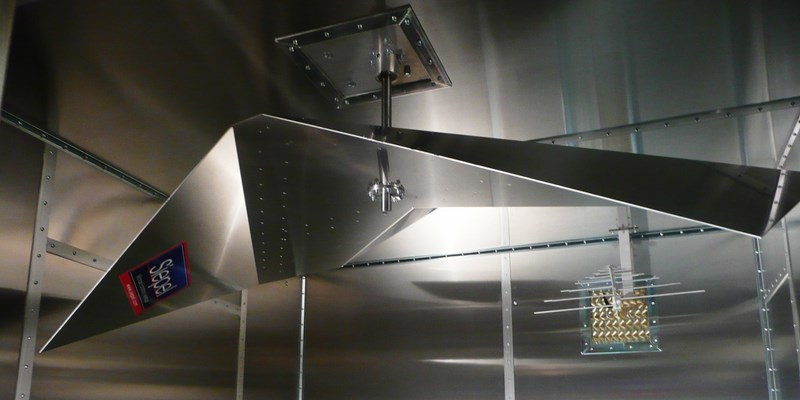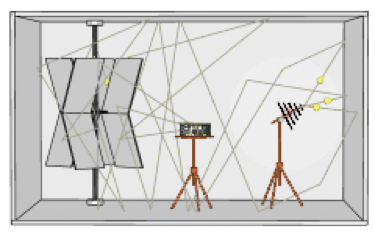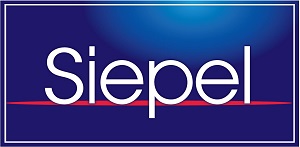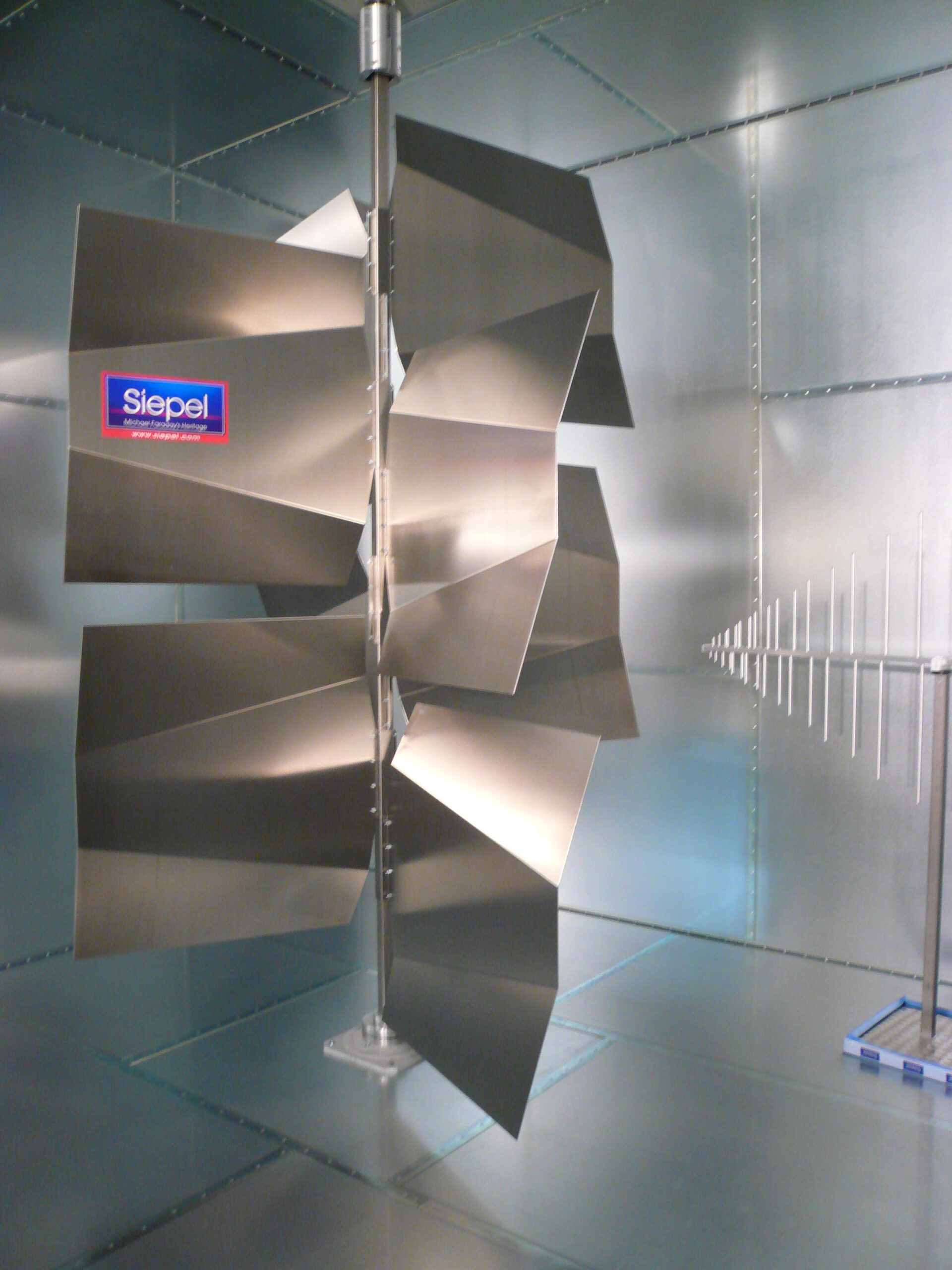Reverberation chambers

The ideal solution for creating high field strengths for EMC tests
RVCs/ MSCRs are used as equipment for the testing of electromagnetic compatibility (EMC), immunity and emissions in the automotive, military, aeronautics and civil sectors. They make it possible to perform tests of radiated disturbances (EMC) that meet the requirements set out in regulations and standards, including MIL STD 461, DO 160, IEC/EN 61000-4-21, ISO11452-11, as well as automotive industry standards.
Manufacturers of electronic equipment for these sectors are faced with the question of the generation of high-intensity electromagnetic, CW and pulsed fields over very wide frequency bands.
In an anechoic chamber, the generation of high field strengths (>1000 V/m) demands very powerful and therefore very expensive amplifiers. What is more, some field levels are sometimes unachievable using this configuration.
To overcome this difficulty, we use Mode-Stirred Reverberation Chambers (RVC). Metal enclosures equipped with a mode stirrer, the RVCs are able to produce high field strengths (several hundred or thousand V/m) at an optimized input power. The tested equipment is exposed to isotropic radiation: the multiple reflections of the incident waves use constructive interference to generate high field levels. The electromagnetic environment created by this stirring is statistically isotropic and homogeneous (having the same physical properties irrespective of direction and position) over a full rotation of the stirrer.
Functioning of reverberation chambers
The resonance conditions inside the enclosure are randomly modified by mechanical stirring in order to obtain a field that is considered to be statistically uniform within a volume sufficiently far away from the walls. The rotation of the stirrer modifies the distribution of the field in the cavity, which then functions as a resonator.
The larger the chamber is, the weaker the lowest usable frequency (LUF) will be. The dimensions of the stirrer are linked to the dimensions of the MSRC and the lowest usable frequency. Indeed, the stirrer must be large enough to modify the distribution of the field at low frequencies.
Advantages of a Siepel reverberation chamber
- Generation of a high field at a limited cost using low/medium-power amplifiers;
- Illumination of the tested equipment by means of electromagnetic radiation coming from all directions and polarizations;
- Reduced testing time because all the surfaces of the equipment are tested;
- Shielded, high-performance enclosure with highly conductive panels;
- Combined with a single, extremely effective stirrer and full instrumentation, they guarantee that the required performance will be achieved;
- Exhaustive testing coupled with a high level of repeatability;
- Use of modular technology means that the reverberation chamber can be modified, dismounted, relocated and/or reassembled without damage.
 With 25 years of experience and more than 100 installations worldwide, we are expert in the provision of RVC solutions, backed up by a commitment to performance.
With 25 years of experience and more than 100 installations worldwide, we are expert in the provision of RVC solutions, backed up by a commitment to performance.
We work together with the best enterprises in the market to supply fully-featured, turnkey RVC solutions complete with software, amplifiers and instrumentation.


